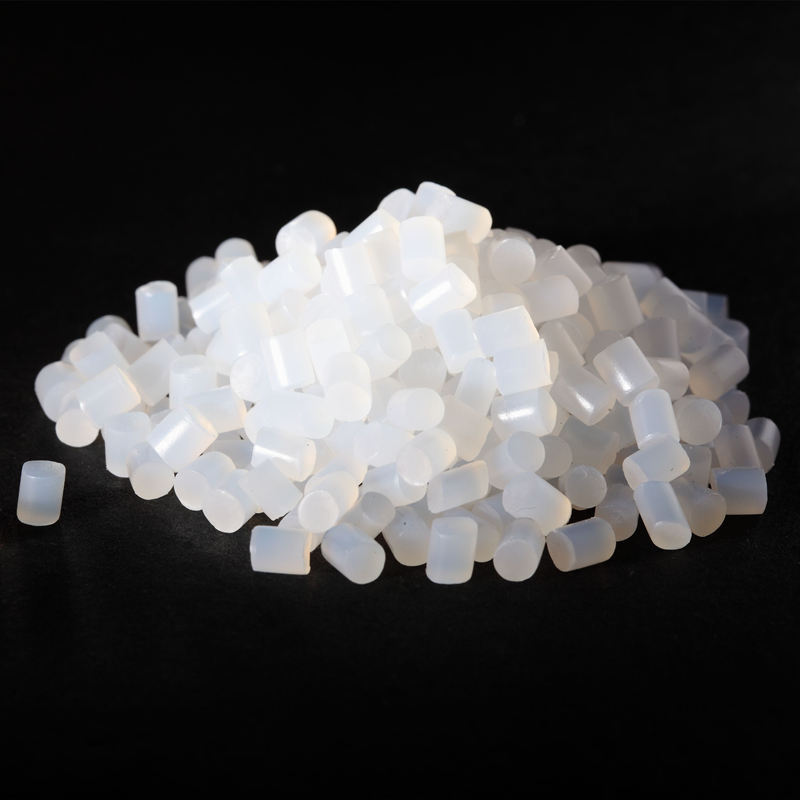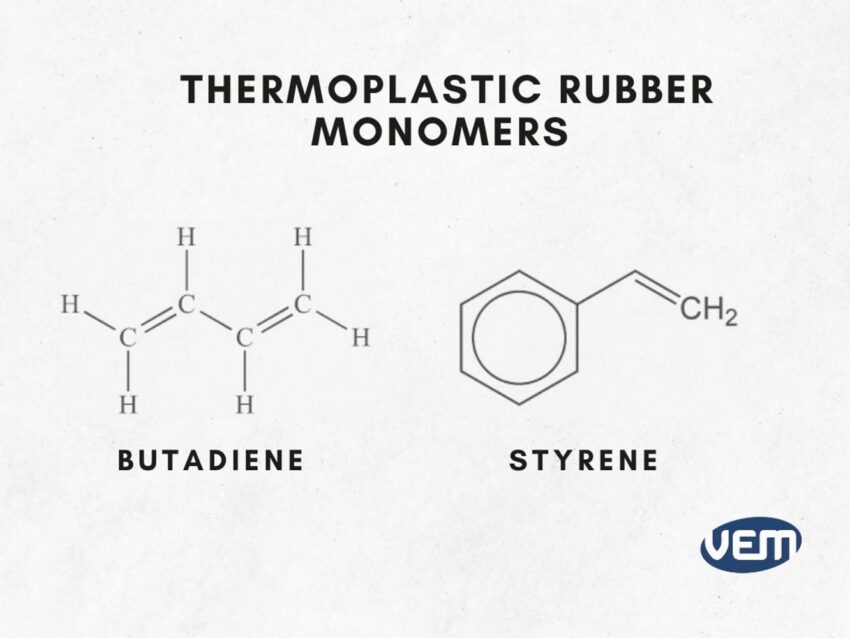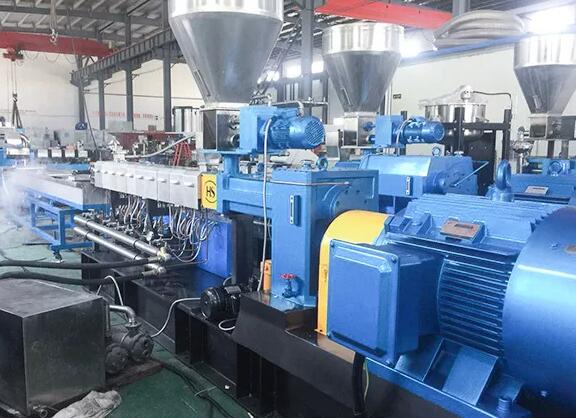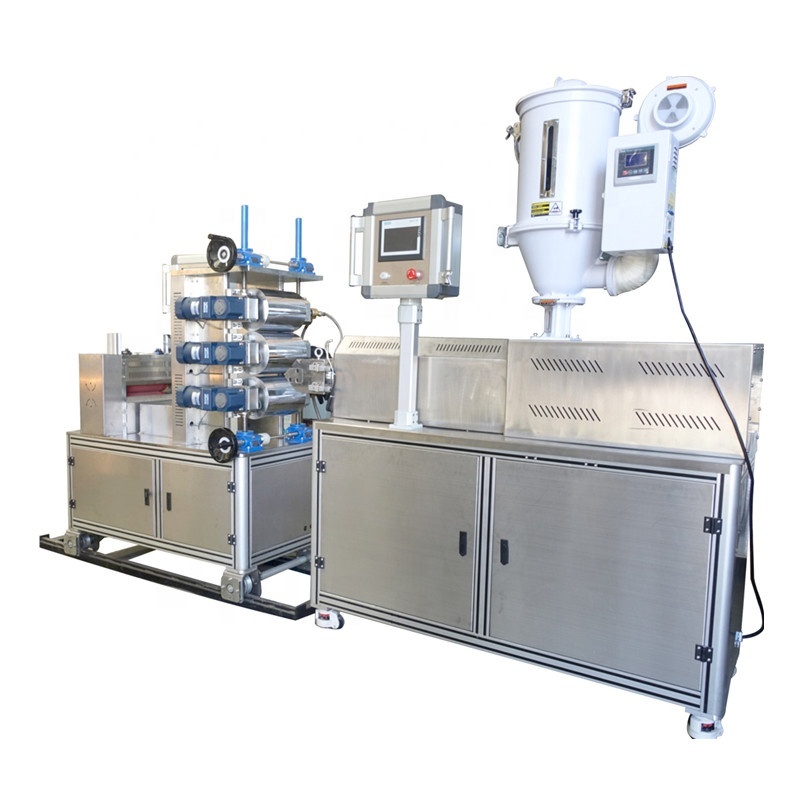
Guide to TPR Materials: What You Need to Know
In recent years, with the development of science and technology, environmental problems have become more and more prominent. Therefore the product and application of environmentally friendly materials have received more and more attention.
TPR materials, i.e., thermoplastic rubber, are environmentally friendly materials widely used in industrial production, automotive, and household appliances due to their excellent mechanical and thermal properties. In this article, the application characteristics, functional properties, and application areas of TPR materials are discussed in depth.
Thermoplastic rubber emerged in the early 1950s but has only been used marginally since 1965. Now thermoplastic rubber is developing exceptionally rapidly worldwide, constituting a new industrial raw material system known as ‘third-generation rubber.’
So,
What is TPR material?
TPR (Thermo-Plastic-Rubber material) is a thermoplastic rubber material. It is a thermoplastic soft rubber material with rubber elasticity that can be directly processed and molded (e.g., injection molding, extrusion, blow molding, etc.) without vulcanization.
TPR materials are based on thermoplastic styrene-butadiene rubber (e.g., SBS, SEBS), modified by adding resins (e.g., PP, PS), fillers, plasticizers, and other functional additives. In short, it is a recoverable, elastic, and malleable composite material. One of the main characteristics of TPR materials is their high fatigue strength, which allows them to withstand high bending stresses and long service life.
TPR, the term most users use for thermoplastic elastomers, refers to materials modified with styrene elastomers such as SBS and SEBS. TPR material suppliers refer to SBS-modified materials elastomer materials as TPR and SEBS-modified materials as TPE for ease of differentiation. But in fact, TPE is a broad concept that includes styrene elastomers, SEBS, SBS modified materials, but also TPU, TPV, TPEE, TPO, and other elastomeric materials.
How Is Thermoplastic Rubber Manufactured?
Thermoplastic rubber (TPR) is a material with both plastic and rubber physical properties. It is created through a process called thermoplastic vulcanization, or TPV. This process involves blending two different polymers to create the desired TPR material.
The first polymer is typically an elastomer, such as natural rubber, styrene-butadiene rubber (SBR), nitrile rubber (NBR), polychloroprene (CR), or chlorosulfonated polyethylene (CSM). The second polymer is usually a thermoplastic copolymer, such as ethylene vinyl acetate (EVA) or polypropylene (PP).
These two materials are combined in an extruder, melting into one product. Once melted together and cooled to the desired temperature, the product can be formed into any shape needed for the application.
Living anionic polymerization is a process that utilizes a catalyst to form long, linear chains of monomers. In the case of SBS, which makes up TPR, this involves butadiene and styrene monomers. First, the styrene and butadiene are combined in a reaction vessel with an initiator. The initiator activates the catalyst and causes it to break down into individual atoms or ions.
These combine with the monomers and form long, linear chains of alternating styrene-butadiene units. This chain formation continues until all monomers have been used or a desired length is achieved.
Once the desired molecular weight is reached, any remaining reaction components are removed from the material using appropriate extraction techniques such as steam distillation or precipitation/filtration steps.
After extraction, what’s left behind is SBS -a synthetic rubber- which can be further processed into TPR (Thermoplastic Rubber). This material can be used for various applications, such as gaskets, seals, insulation, etc., due to its flexibility and durability.
TPR is usually produced from plastic pellets that are processed into melt-processing techniques, such as plastic pellets that are transformed into pellets for plastic melt processing.
Melt-processing techniques are essential for manufacturing TPR, as they allow the TPR pellets to be molded into different shapes and sizes. Standard melt-processing methods for TPR include injection molding, extrusion, and blow molding. Injection molding is when molten plastic is injected at high pressure into a steel or aluminum mold cavity, where it cools and hardens to the shape of the hole before being ejected from the mold.
Extrusion is when melted plastic material is forced through an extruder die that gives it its desired shape before cooling. Blow molding produces hollow objects such as bottles by inflating heated parisons against a preformed cavity to shape them.
Each of these processes has advantages depending on what type of product needs to be made with TPR materials.
For example, injection molding can produce complex parts with fine details quickly, while blow molding requires less energy but may take longer as multiple molds need to be created for each product. Regardless of the chosen process, melt-processed manufacturing methods are essential in making products from TPR materials that meet customer expectations and needs.

Rubber Injection Molding
Rubber injection molding is a process that involves injecting molten plastic or thermoplastic rubber (TPR) material into a mold to create complex-featured parts. It is often used for applications in the automotive and medical industries where precision and accuracy are required.
Depending on the project’s needs, this process can be done with either automatic or manual machines. During this process, heated plastic is injected under pressure into a metal die cavity to shape it into the desired part. After cooling, the molded parts are ejected from the mold and ready for use.
Alternatively, TPR can be molded over a more rigid structure, such as an aluminum insert, to create soft grips and other elastic components; this method is commonly called over-molding. When using over-molding, two separate injection molds are required – one for the challenging part and one for the TPR component – joined together after being cooled down.
The resulting product has rigid and flexible properties, making it ideal for many applications, including automotive interiors, medical devices, kitchen utensils, toys, and sporting goods.

Blow Molding
Air blow molding is a popular manufacturing process for products that require thin walls and complex shapes. It is a variation of injection molding and utilizes air to force the molten plastic onto the inner surface of a mold. This method produces parts such as bottles, tubs, tanks, and containers accurately and quickly. The resulting products are robust, lightweight, and consistent in shape.
One advantage of air blow molding is its ability to produce intricate details on the interior surfaces of components quickly. This process creates parts with uniform wall thicknesses while maintaining strength throughout the part’s structure. Furthermore, because no clamping force or high pressures are required, less energy is consumed during production, which reduces costs substantially.
The use of air blow molding has become increasingly popular due to its efficiency and cost-effectiveness when creating high-quality components for numerous industries, including automotive, medical devices, consumer goods packaging, and more.
With advancements in machinery technology over time, this process will continue to be an attractive option for companies looking for cost savings without compromising product quality or performance.

Extrusion
Extrusion is a fabrication method used to produce components with consistent cross-sections. It works by forcing molten plastic through a die. This process helps make items such as pipes, rods, and uniform shape or section profiles.
The extrusion process can also create complex geometries, such as hollow tubes and enclosed shapes. It’s widely used in producing thermoplastic rubber (TPR) material commonly found in medical equipment, automobile parts, and consumer goods due to its flexibility and durability.
The die design must be carefully considered when creating TPR components because it will determine the size and shape of the finished product.
After extruding the molten plastic through the die, additional steps may be required depending on the complexity of the component, including trimming, heating, or cooling, depending on operational requirements.
Overall, extrusion is an efficient way to manufacture products from TPR materials with precision and accuracy every time.

Calendering
Calendering is a process used to create flat, flexible sheets with fabric cores. These sheets are commonly used for products such as conveyor belts. The process starts by passing the material through two or more rollers that are heated and pressed together to flatten and bond the materials.
This can be done at various temperatures depending on the material being calendered. Depending on the application, different additives can also be added during this process, such as adhesives or other chemicals that give additional strength and flexibility to the final product.
Once calendered, the sheet is cooled and cut into the desired shape or size required for its specific purpose. Calendering is a vital manufacturing step for many belt applications because it creates a strong bond between different layers of materials, increasing their lifespan and performance in demanding environments.
Additionally, calendering gives manufacturers more control over the thickness and uniformity of finished products than other methods like extrusion or laminating, which further contributes to their overall quality and stability when put into use.
Properties of TPR materials
TPR material (thermoplastic rubber) is a special type of rubber material used in many industries due to its good heat, corrosion, and oil resistance.
Physical & Chemical Properties of TPR Materials
- High elasticity: TPR materials have excellent elasticity, can achieve a soft structure, and maintain high mechanical properties. TPR materials are softer and more comfortable than rubber, but the material’s tensile strength, fatigue resistance, and mechanical properties are not better than those of vulcanized rubber.
- Heat resistance: TPR material has a high heat resistance and can be used at -45~90℃, meeting the requirements of various high-temperature applications. A modified SEBS base material can be selected if good aging and temperature resistance are required.
- Corrosion resistance: TPR materials have good corrosion resistance, can withstand a certain amount of water and oil corrosion and have a certain amount of anti-aging properties.
- Tensile strength: TPR materials have good tensile strength and can withstand large tensile forces while ensuring good toughness. TPR materials can be adjusted in hardness from 5 to 100 degrees Shore, and SEBS-based modifications can be modified to lower hardness.
- Anti-aging: TPR material has good anti-aging properties and can withstand a certain degree of climate change while maintaining the freshness of the material for a long time.
Does Thermoplastic Rubber Contain Latex?
Thermoplastic rubber (TPR) is a versatile material made of polymers, which have been heated and then cooled to form a rubber-like product. It has many benefits, including being durable, flexible, and shock-absorbent. However, it’s important to note that TPR contains no latex.
Latex is derived from the sap of certain plants and is used in many products, such as gloves, condoms, and balloons. In contrast, TPR is 100% synthetic, so those with an allergy or sensitivity to latex can use thermoplastic rubber without worry.
When buying materials for crafting projects or other uses, look for non-latex or hypoallergenic materials to avoid purchasing latex products.
Additionally, make sure the product label states it contains thermoplastic rubber instead of natural or synthetic rubber; these materials may contain latex particles which could cause an allergic reaction in some people.
If you’re unsure about a product’s contents, don’t hesitate to contact the manufacturer for more information before purchasing.
Is Thermoplastic Rubber Waterproof?
Thermoplastic rubber, or TPR for short, is a type of polymer. It is unique in its ability to be both flexible and robust simultaneously. This combination makes it an ideal material for many applications, such as shoe soles and other wearables. TPR plastic can be molded into various shapes and sizes when exposed to heat.
TPR materials are known for their excellent waterproof qualities too. Most shoe manufacturers use some form of thermoplastic rubber to provide their customers with shoes that can take on water without becoming soggy or warped.
Many other products are made with TPR plastics explicitly designed to keep moisture out while remaining lightweight and flexible enough to move quickly with the user’s body.
TPR plastics offer manufacturers an affordable alternative to more expensive synthetic materials like neoprene or polyurethane foam. They also have a shallow environmental impact since they’re recyclable when disposed of properly and don’t contain any toxins like traditional synthetic materials may have had in the past.
This makes them an excellent option for consumers who want a sustainable solution for their footwear needs without sacrificing quality or durability.
TPR materials vs PVC materials
TPR and PVC are soft materials with a rubbery elasticity that is difficult to identify by appearance and feel. The difference is easier to make visually by burning.
–Look at the smell of burning.
TPR burns with an aromatic smell, which is not unpleasant, while PVC burns with a chlorine odor, which is undesirable.
–Look at the color of the flame.
If the flame is green at the root, the material is PVC; if it is blue, it is TPR.
–Flame retardant level (means material without flame retardant)
PVC flame retardant grade UL94-V2, which is self-extinguishing, burns on the ignition, and the flame will generally go out when the ignition source is withdrawn.
TPR flame retardant grade is UL94-HB, which burns on fire and does not go out when the ignition source is removed.
What Are the Different Types of TPR Materials?
TPR materials come in a variety of different forms, including:
• Thermoplastic Elastomer (TPE): This flexible, durable material is often used for parts and components that require flexibility and strength.
• Thermoplastic Polyurethane (TPU): This is a more rigid material often used for parts and components requiring a higher level of durability.
• Thermoplastic Copolyester (TPC): This is a more flexible material often used for components requiring flexibility and strength.
• Thermoplastic Vulcanizate (TPV): This is a more rigid material often used for components requiring a higher level of durability.

Application of TPR materials
TPR (Thermoplastic Rubber) materials are an excellent choice for product design due to their superior properties. TPR provides flexibility, durability, and resistance to temperature variations.
This material is also resistant to oil, grease, and solvents, making it highly versatile and suitable for various applications. In addition, the material can be easily molded into different shapes, allowing manufacturers to create products with unique designs.
Moreover, TPR materials are lightweight and have excellent vibration-damping characteristics. Customers benefit from products made with TPR materials since they last longer and provide better protection against environmental hazards.
Overall, this material is superior to other plastics and rubber materials today.
Due to their excellent impact resistance and heat resistance, TPR materials can be used in daily life to manufacture various plastic products, such as
- Electronic appliances: TPR materials can be used to manufacture the shells of household appliances, such as televisions, refrigerators, washing machines, electric ovens, etc.
- Mechanical parts: TPR materials can manufacture various features, such as rollers, grease, etc.
- Daily necessities: TPR materials can be used to manufacture a variety of everyday needs, such as plastic spoons, plastic chopsticks, plastic cups, plastic buckets, plastic towels, etc.
- Medical devices: TPR materials can be used to manufacture various medical devices, such as sterilization cabinets for operating rooms, infusion racks, nursing beds, etc.
How to Use TPR Material Effectively
You can use it effectively for various projects by understanding the various applications of TPR. It is an excellent choice for applications that require flexibility, durability, and resistance to wear and tear.
1. Molds: TPR can create molds for various products, such as automotive parts, toys, and medical devices. It is commonly used in injection molding and is a great choice for complex shapes or intricate details.
2. Gaskets: TPR can be used to create gaskets for applications like HVAC systems and electronic enclosures. It is resistant to abrasion and can seal against air, water, and other fluids.
3. Seals: TPR also creates seals for applications like pumps and valves. It is resistant to chemicals and can be used in high-pressure applications.
4. Insulation: TPR can create insulation for electrical and electronic components. It is a great choice for applications where high temperatures are present.
5. Footwear: TPR is commonly used in producing footwear, such as shoes, boots, and sandals. It is flexible and durable, making it ideal for these products.
Safety Guidelines for Using TPR
1. Always wear protective gloves and safety glasses when handling TPR.
2. Avoid contact with skin, eyes, and clothing.
3. Keep TPR away from any sources of heat or open flames.
4. Do not inhale the fumes from TPR.
5. Make sure that all tools used to cut, shape or drill TPR are in good condition and are properly grounded.
6. Clean up spilled TPR immediately, as it may cause slipping hazards.
7. Dispose of TPR properly in accordance with local regulations.
8. Store TPR in a cool, dry place away from any sources of heat or open flames.
Conclusion: Benefits Outweigh Challenges
TPR materials are versatile and cost-effective plastic materials used in various industries for decades. As technology advances and new materials are developed, the future of TPR materials will continue to be a viable option for many products and applications.
Soon, TPR materials will continue to be used in many current applications, such as kitchenware, automotive components, and medical devices. As research continues to push the boundaries of material science, new TPR formulations that are stronger, more durable, and more cost-effective than current formulations may be developed.
In addition to new formulations, new processes, and production techniques may be developed that allow for faster and more efficient production of TPR materials. This could result in cost savings and quicker turnaround times for customers.
Finally, new and innovative uses for TPR materials may be discovered. For example, TPR materials may be used in 3D printing applications, or they may be used as a replacement for metal parts in industrial equipment. As technology evolves, TPR materials may become even more versatile and cost-effective for many industries.





